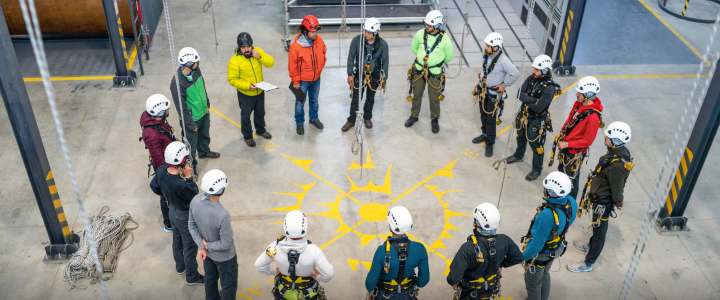With the holiday season right around the corner, many businesses are gearing up to welcome a surge of seasonal workers to help manage the increased demand. Whether it’s in retail, hospitality, or logistics, temporary and seasonal employees are vital for keeping operations running smoothly during this busy time.
However, their short tenure and varying levels of experience make them particularly vulnerable to workplace hazards. That’s why prioritizing safety training for these workers is essential — not just to protect them, but to ensure a safe and efficient work environment for everyone involved.
Common Risks Faced by Temporary & Seasonal Workers
Seasonal workers are often brought in during high-demand times when operations are running at full capacity. While they help maintain productivity, their unfamiliarity with workplace procedures can pose significant risks. These workers may not be fully aware of the hazards they might encounter, making them more susceptible to injuries or accidents. According to the OSHA, temporary workers are particularly vulnerable to serious physical harm due to inadequate safety training.
By integrating proper safety training from day one, employers can mitigate these risks and ensure all workers, regardless of their employment duration, are adequately protected.
Safety Training is Key!
Temporary employees are a vital part of many industries, but they face unique risks that make safety training a must. By providing comprehensive, tailored safety training, companies can not only protect their workers from serious harm but also foster a safer, more compliant workplace overall.
Compliance with OSHA Standards
OSHA requires that all workers, including temporary and seasonal employees, receive the same level of training as full-time employees. This includes understanding recognized hazards in the workplace and being aware of the safety protocols that need to be followed. Failure to comply with OSHA standards can result in citations, fines, or worse — serious physical harm to employees.
Preventing Workplace Accidents
When temporary and seasonal workers receive proper safety training, they’re much more likely to avoid accidents that could lead to injuries. This not only saves your company from the financial burden of workers’ compensation and lost productivity, but it also protects your reputation.
Workers who fully understand safety procedures are better prepared to navigate potential hazards, fostering a safer environment for everyone. By investing in their training, you create a workplace culture where everyone looks out for each other.
“An ounce of prevention is worth a pound of cure.” – Benjamin Franklin
Building a Safety-Oriented Culture
Providing OSHA-compliant safety training for all workers, regardless of their employment length, fosters a culture where safety is prioritized. When temporary workers see that their well-being is valued, they are more likely to follow safety protocols, report hazards, and contribute to a safer workplace.

Key Elements of a Safety Training Program for Temporary Workers
Wondering how to make sure your temporary workers stay safe on the job?
1. Onboarding Safety Orientation
A safety onboarding process for temporary and seasonal employees should include a thorough safety orientation. This is the perfect time to introduce them to workplace safety policies, emergency procedures, and PPE requirements. By making safety a priority from the start, companies can ensure all workers understand the importance of workplace safety.
2. Tailored Training Based on Job Functions
Safety training works best when it’s specific to the actual tasks your temporary and seasonal workers will be doing. For example, someone in a warehouse needs to know how to safely operate machinery, while a retail worker should be familiar with emergency evacuation procedures.
By customizing the training to match their roles, you’re making sure they’re ready for the real risks they might face day-to-day. It’s all about giving them the right tools to stay safe and confident while they work.
3. Ongoing Reinforcement
Safety training shouldn’t stop after onboarding. To keep seasonal employees informed and prepared, it’s important to have a continuous approach. Regular check-ins and training can help reinforce safety knowledge and ensure they’re ready to handle workplace risks.
Here’s how to maintain ongoing safety reinforcement:
- Schedule regular safety check-ins with employees
- Offer refresher courses on key safety protocols
- Provide on-the-job training specific to their tasks
- Encourage open communication about safety concerns
- Keep employees updated on any changes to safety procedures
These ongoing efforts help ensure your workforce stays prepared and confident on the job.
Partnering with a Safety Training Provider
Many businesses may lack the resources or expertise to deliver comprehensive safety training to temporary workers. In these cases, partnering with a safety training provider like Safety by Design can help. Professional safety consultants can ensure that all workers receive consistent, high-quality safety training that complies with federal law and OSHA regulations.
Ready to improve your safety training for temporary workers? Contact Safety by Design today to learn how we can help you integrate effective safety training into your operations, ensuring compliance with OSHA standards and protecting all your workers.




